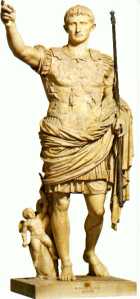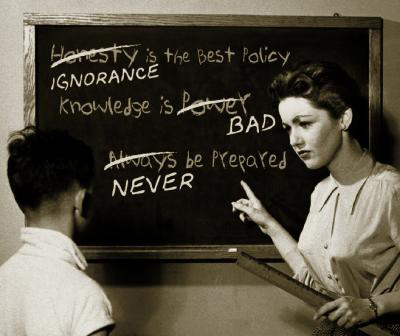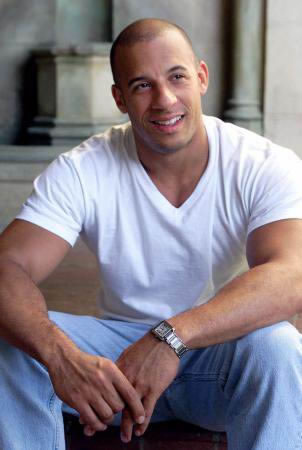by Becky Walker
On February 6, 2008, the American College of Obstetricians and Gynecologists released their statement on home births and reiterated their “long-standing opposition to home births” (ACOG 1). The American Medical Association, at their 2008 annual meeting, made a statement of support to the ACOG’s claim that the safest place for birth was within a hospital or birthing center (which meets their standards), to the extent of supporting legislation stating such (AMA). The American College of Nurse Midwives believes that “[e]very family has the right to the birthing environment of their choosing” (ACNM 1), including the home. Great Britain’s Royal College of Obstetricians and Gyneacologists (RCOG) and the Royal College of Midwives (RCM) “support home birth for women with uncomplicated pregnancies,” finding no reason it should not be offered to low-risk clients (Cresswell 1) as does the American Public Health Association (APHA), and the World Health Organization (WHO). The Society of Obstetricians and Gynecologists of Canada, while not taking a specific stand on home birth, calls for more research but considers it the woman’s decision as to where to labor and birth (CBC 1).
Despite the ACOG’s claim that home birth places undue risk upon the mother and child, there is little conclusive evidence to support such a claim. As they themselves say, “…studies comparing the safety and outcome of births in hospitals with those occurring in other settings in the US are limited and have not been scientifically rigorous” (ACOG 1). This is due largely to the ethical concerns of randomized control trials and their infeasibility (Johnson and Daviss 4). Large prospective studies are the best available method of compiling data and the studies that have been done have come to contradictory conclusions in regard to mortality and morbidity. When the studies that have been done are looked at (weakness accounted for) along with the many other factors effecting the decision of where to birth, the evidence is such that every woman must continue to have the freedom to choose where and with whom she will labor and deliver. There simply is not evidence for restricting a woman’s right to this reproductive choice.
There are, as mentioned earlier, studies that show home birth to have a higher risk of adverse outcomes than a hospital birth. Dr. Michael H. Malloy’s study is one such study. Jill Stein, reporting on the study for Reuters Health Information, tells that Malloy is a professor of neonatology at the University of Texas Medical Branch in Galveston. He did a study comparing adverse outcomes among place of birth and birth attendant. He compared hospital birth with doctors, Certified Nurse Midwives (CNMs) and other nurse-midwives, birth center births with CNMs, and home births with CNMs and other nurse-midwives. He found the risk of neonatal mortality was two times higher for home births overseen by a CNM than for hospital births overseen by a CNM (Stein 1). Home birth with a nurse-midwife other than a CNM was the highest risk at 1.77 per 1000, home birth with a CNM next at 1.035 per 1000. Hospital birth overseen by a CNM was 4.96; other nurse-midwife 4.03; and doctor 6.77. Birth center with a CNM was 6.32 per 1000 (Stein 1).
However, there are also studies that have found the mortality rate of home birth to be comparable to that of hospital birth. Kenneth C. Johnson and Betty-Anne Daviss conducted a large prospective study of planned home births in North America. They looked at 5,418 woman who planned on delivering at home and found the mortality rate of 1.7 per 1000 low risk pregnancies to be consistent with mortality rates of low risk hospital births (Johnson & Daviss 1-2). Dr. Patricia Janssen, from the University of British Columbia, et al. conducted a study which compared the outcomes of 2,889 planned home births attended by regulated midwives, 4,752 planned hospital births with the same group of midwives and 5,331 planned hospital births attended by physicians. Janssen et al. found comparable mortality rates between home and hospital births, about 2 per 1000, though the rate of deaths per 1000 births in the first month of life was quite different: .35 for home birth, .57 for midwife attended hospital birth, and .64 for hospital birth attended by a physician (CBC 1-3).
Malloy attributes his findings on infant mortality to correlating Apgar scores (an Apgar score is the measurement of certain attributes – Appearance, Pulse, Grimace, Activity, and Respiration – to “access the health of newborn children immediately after birth.” A score under 3 is critically low, 4-6 is low, and 7-10 is normal (wikipedia)). Apgar scores of less than four were eight times higher for CNM home births than for CNM hospital births (Stein 1). Malloy suggests the low Apgar scores are the “casual pathway” to the higher rate of neonatal death through “asphyxiating conditions at birth that are not as easily handled in the home environment” (qtd. in Stein 1).
Yet, Ursula Ackermann-Liebrich et al., authors of a prospective study which matched Swiss women planning a home birth with comparable women planning a hospital birth, found that the one minute Apgar scores were higher for the hospital birth group (8.03) than for the home birth group (7.78). However, at the five minute mark and at the ten minute mark, the home birth group’s Apgar scores (9.26 and 9.7 respectively) were higher than the hospital birth group’s scores (9.01 and 9.48) (Ackermann-Liebrich 7). Janssen et al. found that home birth infants, compared to midwife attended hospital birth infants, were less likely to need resuscitation or oxygen therapy after 24 hours (.23 times less likely) and also less likely to “have aspirate meconium (inhaling a mixture of their feces and amniotic fluid)” (.45 times less likely) (CBC).
As seen, mortality rates and rates of other adverse outcomes alone can not be used to show one place of birth as superior to another. What then motivates a woman to consider birthing at home if there’s not concrete evidence that it is safer? What motivates the ACOG and the AMA to make such a strong stance against home birth without solid research to back them up?
The ACOG defends their stance against home birth by saying, “Complications can arise with little or no warning” (ACOG 1) and hospitals are designed to deal with those complications – especially those complications which can quickly become emergencies. From IV fluids to electronic fetal monitoring, from epidurals and spinal blocks to cesarean sections, hospital birth has “technological advances” over home birth (Raymond 9-10). These technological advances may be what caused Malloy’s study to show the safest place to give birth is in the hospital with a CNM (Stein 1). Complications can and do arise quickly but home birth practices have shown that “most complications can be anticipated in enough time to transfer the mother/infant to the hospital with enough time to deal with the complication successfully” (Raymond 3). A receptive and non-hostile environment is essential to quickly caring for complications that require a transfer to the hospital (ACNM) and a delay in the process “may have serious consequences” (Cresswell 2).
The occurrence of complications may be lessened by the reduction in obstetric interventions. A desire to have fewer interventions is a big reason why some women choose home birth and the research solidly backs that up. Interventions among the home birth group in Janssen et al.’s study occurred with much less frequency than among the hospital group, even among women transferred to the hospital, suggesting the lowered rate may be due to the mother’s determination to not have them. Those having home births were .32 times less likely to have electronic fetal monitoring and .41 times less likely to have an assisted vaginal delivery (CBC). Johnson et al. found the same occurrence with an even greater difference. They looked at electronic fetal monitoring, episiotomy, cesarean, and vacuum extraction between planned home births and planned hospital births among low-risk women. Home birth had rates of 9.6%, 2.1, 3.7, and .6 respectively while the hospital group had rates of 84.3%, 33, 19, and 5.5 respectively. Johnson and Daviss reported electronic fetal monitoring rates of 9.6% for the home birth group and 84.3% for the hospital group; episiotomy: 4.7% home birth, 33% hospital births; forceps: 1% home birth, 2.2 hospital; vacuum extraction: .6% home birth, 5.2% hospital birth; cesarean section: 3.7% home birth, 19% hospital births (Johnson and Daviss 4).
Women may be motivated to consider home birth because they wish to have fewer interventions. As Tina Raymond explains, there are pros and cons to every intervention (9). One of the cons is the increased “risk of subsequent complications for the mother” (Ackermann-Liebrich 8). Ackermann-Liebrich et al. did not find the advantages of lower intervention (and subsequent lower rate of complications) to be outbalanced by an increase of adverse neonatal outcomes (8), leading the researches to the conclusion that “home delivery has advantages over hospital delivery” because of the lower rate of interventions and increased comfort of the mother (Ackermann-Liebrich 9). Janssen et al. came to similar conclusions: “Women planning birth at home experienced reduced risk for . . . interventions measured and similar or reduced risk for adverse maternal outcomes” (CBC 1).
As the RCOG and the RCM state, physical safety is not the only factor. Emotional and psychological health should also be considered when making the choice of where to give birth (Cresswell). Increased comfort and relaxation are two such reasons. As Raymond urges, “ . . . relaxation should not be underestimated when considering the safety of home birth” (9-10) and home is, generally, more relaxing and comfortable than the hospital, regardless of how “home-like” a hospital has attempted to be. Having only the people she has chosen present and not being distracted by nurses bustling about or by other laboring women, leaves a woman free to focus on her own labor (Raymond 9-10). Being able to move as one wishes greatly increases a woman’s comfort as well. In the Swiss study, “. . . ninety per cent [sic] of women delivering at home reported that they could always move freely” as opposed to only 57% of those birthing in the hospital (Ackermann-Liebrich 8).
Women having a home birth are also freer to choose what position they will birth in. Midwives in the home environment, as opposed to doctors in the hospital environment, monitor labor, help the mother change positions, and, when it is time, “catch” the baby from whatever position suits the mother best and not what is most convenient for the midwife (Lake et al. 1). Fifty-nine percent of the women in the home birth group reported that they were able to choose their birthing position, according to Ackermann-Liebrich et al (8). In the hospital group only 35% were allowed to choose the position they wished to birth in. They also found that while mothers in the hospital typically gave birth while lying down, women at home typically gave birth on elbows and knees, standing, or sitting (6) – mostly vertical positions in which labor is aided by gravity.
It is this autonomy that draws suspicion upon the ACOG and the AMA’s motivation in their drive for legislation limiting home birth. The ACNM, the Society of Obstetricians and Gynecologists of Canada, the UK maternity policy and the ACOG all agree that a woman has the right to make her own choices in regard to her pregnancy and birth but only the ACOG does not acknowledge the right of a woman to choose home as her place of birth. The ACOG and the UK maternity policy both state that birth is a normal life event but the UK maternity policy goes on to say that a mother’s experience of having “choice and control” throughout the birthing process can have a substantial, positive effect on her children’s healthy development (Cresswell 3).
By coming out against home birth the way they have, proclaiming their lack of support to those that provide home birth and partnering with the AMA to:
support state legislation that helps ensure safe deliveries and healthy babies by acknowledging that the safest setting for labor, delivery and the immediate post-partum period is in the hospital, or a birthing center within a hospital complex, that meets standards jointly outlined by the AAP and ACOG, or in a freestanding birthing center that meets the standards of the Accreditation Association for Ambulatory Health Care, The Joint Commission, or the American Association of Birth Centers (AMA 15).
the ACOG is, by default, limiting a woman’s reproductive choices. Some physicians fear the ACOG’s statements could be used to make having a home birth more difficult if not impossible.
Distrust between home birth providers and the hospitals and doctors they must, in order to remain within the ACNM guidelines of safe home birth, have as a back-up plan is the first way choice is limited. If through their statements, the ACOG and the AMA, very influential organizations, convince most doctors and nurses to see home birth as irresponsible and a woman’s choice to have a home birth as her simply following a trend or “cause célèbre” (ACOG 1), they will resent being called upon to pick up the pieces. Hostility between home birth practitioners and the medical establishment may create delays in the transfer process and is not going to achieve “best practice” (Cresswell 2). As such, women’s choices will become limited.
Secondly, the ACOG’s statement against home birth may, as Dr. Stuart Fischbein, a dissenting member of the ACOG, fears, affect insurance companies and their willingness to provide coverage to midwives who provide home births and to the doctors who oversee those midwives (Hunter 2). If those doctors are unable to get insurance or unable to get affordable insurance, they will cease to provide support to home birth providing midwives. The midwives, in turn, will either stop providing home births or practice home birth without a doctor’s support, stepping outside the safety guidelines. If the midwife is unable to get insurance for herself, she will either cease to provided home births or move her practice underground, further removing herself from the guidelines of safety. A woman’s choices becomes limited either because her midwife is no longer practicing or is practicing unsafely.
Thirdly, although the ACOG does not call for a ban against home birth, Dr. Fischbein fears that is the direction they are headed (Hunter 2). The AMA, pledging support to proposed legislation, “Resolution 205,” supports the ACOG’s position that home birth is unsafe. Gregory Phillips, ACOG spokesman, said that criminalization of home birth is not the goal (Hunter 2) and yet, as Aina Hunter asks, if not seeking criminalization, why “legislation?” Why not just issue a public service statement (Hunter 2)? Dr. Erin Tracy, in an interview with ABCNEWS.com, said that though the AMA is calling for legislation, there was no “talk of criminalizing women who have home birth” (Hunter 3). What is also not mentioned is whether they plan on not criminalizing those who provide home births. Criminalization of midwives who provide home birth would effectively limit women’s access to home birth.
As Lake et al. writes, anti-home birth legislation flies in the face of the “right to privacy, to bodily integrity, and the right of every adult to determine her own health care” (Lake et al. 2). The ACOG and the AMA’s actions prompted Dr. Andrew Kataska to write to the ACOG board saying, “If ACOG and the AMA are passively-aggressively trying to coerce women into having hospital births by trying to legally prevent the option of home birth, then their actions are a frontal assault on women’s autonomy” (Hunter 3).
Women must be allowed to maintain their reproductive freedoms. The ACOG does not have sound reasons for their claims, beyond scare tactics in an attempt to restrict access to more care options. There is simply not clear evidence that home birth places mother and child at higher risk of adverse outcomes and the ACOG’s willingness to limit a woman’s access to reproductive choices casts a shadow of doubt as to their altruistic intentions.
References:
Ackermann-Liebrich, Ursula. Et al., Home Versus Hospital Deliveries: Follow up study of matched pairs for procedures and outcome. September 1996. British Medical Journal 31, March 2010 <http://www.bmj.com/cgi/content/full/313/7068/1313>
American College of Nurse Midwives. Position Statement: Home Birth. Dec. 2005. p. 1. American College of Nurse Midwives. March 27, 2010 <http://www.midwife.org/siteFiles/position/homebirth.pdf>.
American College of Obstetricians and Gynecologists. ACOG News Release: ACOG statement on Home Births. 6 Feb. 2008. American Congress of Obstetricians and Gynecologists. 27 March 2010 <http://www.acog.org/from_home/publications/press_release/nr02-06-08-2.cfm>.
American Medical Association. http://www.ama-assn.org/ama1/pub/upload/mm/38/a08resolutions.pdf, retrieved 4 April, 2010.
American Public Health Association. Increasing Access to Out-of-Hospital Maternity Care Services through State-Regulated and Nationally-Certified Direct-Entry Midwives. 1 Jan. 2001. American Public Health Association. 27 March, 2010 < http://www.apha.org/advocacy/policy/policysearch/default.htm?id=242>.
CBC (Canadian Broadcasting Company). Home Birth with Midwife Safe as Hospital. 31 Aug. 2009. CBC News. 31 March 2010 <http://www.cbc.ca/health/story/2009/08/31/midwife-home-births.html>.
Cresswell, JL, and Stephens, E. Royal College of Obstetricians and Gynaecologists and the Royal College of Midwives Joint statement No. 2: Home Births. April 2007. Royal College of Obstetricians and Gynaecologists and the Royal College of Midwives. 25 March, 2010 <http://www.rcog.org.uk/womens-health/clinical-guidance/home-births>.
Lake, Ricki., Block, Jennifer., Epstein, Abby. Huffingtonpost.com. 18 June 2008. Docs to Women: Pay No Attention to Ricki Lake’s Home Birth. 26 March 2010 <http://www.huffingtonpost.com/ricki-lake-jennifer-block-and-abby-epstein/docs-to-women-pay-no-atte_b_107845.html>.
Hunter, Anita. “Are Home Births Dangerous?” abc News 11 June 2008. 19 March 2010 <http://abcnews.go.com/print?id=5340949>.
Johnson, Kenneth C., and Daviss, Betty-Anne. “Outcomes of planned home births with certified professional midwives: large-prospective study in North America.” British Medical Journal n.d. 23 March 2010 <http://www.bmj.com/cgi/content/full/330/7505/1416?ehom>.
Raymond, Tina. “Home Birth, Birth Center, or Hospital Birth: How to Help Your Clients Choose.” International Journal of Childbirth Education (May 1992): page 9-10. 17 March 2010 <http://proquest.umi.com.ezproxy.umuc.edu/pqdlink?RQT=306&TS=1269770266&clientId=8724>.
Stein, Jill. “Midwife-Attended Home Births Less Safe Than In-Hospital Deliveries.” Reuters Health Information. 5 May 2009. Baltimore, Maryland. 19 March, 2010. <http://www.medscape.com/viewarticle/702351>.
World Health Organization. Dept. of Making Pregnancy Safer. WHO Recommended Interventions for Improving Maternal and Newborn Health. 2009. 28 March 2010 <http://whqlibdoc.who.int/hq/2007/WHO_MPS_07.05_eng.pdf>
Wikipedia. Apgar Score. 3 April 2010. <http://en.wikipedia.org/wiki/Apgar_score>.




















